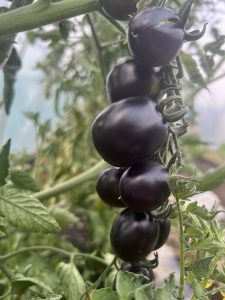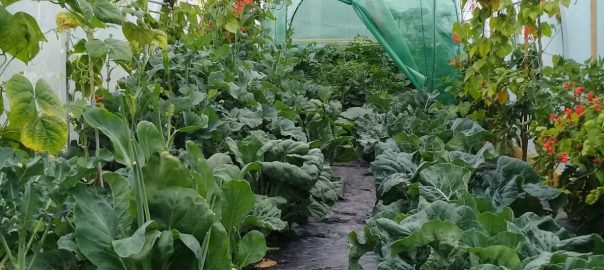February in the tunnelhouse
Welcome to Morrifield’s monthly garden guide where we go undercover to bring you the best tips and tasks for great greenhouse growing. February can have even the most experienced greenhouse grower feeling overwhelmed, as fruit ripens en masse, and your home turns into a processing plant! On top of that, you’re also busy preparing for autumn, which is just around the corner. In this busiest of greenhouse transition months, keep your cool (and don’t let your plants overheat, either!)
Morrifield’s Gardening Zones
Our long maritime country is filled with exciting microclimates. That means your gardening zone may be quite different to your neighbour’s, just a few kilometres away. Use our simple descriptions to help gauge which undercover zone sounds like you!
Zone 1 (Warm Winters, Hot Summers)
Zone 2 (Mild Winters, Hot Summers)
Zone 3 (Cold Winters, Mild Summers)
Zone 4 (Severe Winters, Hot Summers)
Top Tasks Around the Country
All zones
Groom your plants
At this active fruiting time of the year, tomato plants can exhibit some odd behaviours. To keep a check on this, go through your plants once a week. Heritage tomatoes, in particular, are apt to develop leaf branches which extend beyond a flowering truss. If you encounter this, snip off the extension. It is unlikely to produce more fruit at this time of year, even if flowers develop, and the extra foliage will only clog up the greenhouse and inhibit airflow. Leaves toward the base of plants may begin to yellow off. These tired leaves are the kind of foliage that will attract disease. They will certainly slow down air flow. Snip them off, too.
Weighty problems
There is a reason why heritage tomatoes are seldom grown by commercial growers. It is because, for all the interest and delicious taste these plants offer, they exhibit certain weaknesses that make them labour intensive. One of these is the tendency, in some varieties, towards weak stems, including the stems of fruit trusses. Keep a check on heritage tomato fruit trusses, and at the first sign that the weight of fruit is bending the stem over, provide a net hammock to support the truss. As soon as a fruit ripens, snip it off to relieve the weight on the net. If a truss tears away from the stem, snip it off entirely, bring it inside, and place it in a sunny spot where the fruit can continue to ripen.
Ground huggers
One of the must frustrating problems in the greenhouse is when fruit hugs the ground, lying on the soil as it ripens. It gets in the way of watering, gathers moisture on its underside, and is an invitation to insects to munch into it. And yet it seems such a pity to pick it off the plants before they’re mature. Fruit (such as melons) that take several weeks to mature, can be raised off the ground with specially designed cradles (look for them online). Smaller fruits such as tomatoes or cucumbers, can be raised a couple of centimetres off the ground on loose, free draining mulch (pine needles work well for this). If you are using a home made support to get fruit off the ground, steer away from anything made of metal. It will heat up, and burn through the fruit.
Fungus patrol
Keep a close watch on all your greenhouse plants for signs of fungus. Pay particular attention to foliage that is close to or touching the sides of the greenhouse. This is where moisture accumulates during the night, and lingers if the days are overcast. A greying or browning of foliage is the first sign of fungal disease, along with a browning off of blossoms. Green fruit with soft grey spots are a sure sign that fungal disease is present. Snip off all infected flowers and foliage (it may not be necessary to take off an entire leaf if it is large – just snip off the affected section). Remove infected fruit. If areas of stem have turned grey and soft, treat with a recommended fungicide. If a plant is wilting severely through the day, and has not recovered by the following morning, remove it from the greenhouse. As you do so, take care it doesn’t touch other plants in the vicinity, as fungal disease is easily spread. Mark the spot where the plant was removed from, as you will want to dig away the soil from that area once all your heat-lovers have been removed at the end of the season.
Nitrogen-not!
As fruit continues to ripen through the summer, plants, especially those in containers, will appreciate liquid feeding – but not with anything that is high in nitrogen. High nitrogen fertiliser, at this stage in proceedings, will encourage new foliage growth – something that saps the energy from your plants. Soft, new growth is also a magnet for sap-suckers such as aphids and white fly. Make a gentle liquid feed from compost and kelp, soaked in water.
Order for autumn!
Now is the time to think about your autumn and winter greenhouse seed supply for the coming months. Remember, you don’t have space for everything, so focus on those edibles that are your favourites, and which command the highest price in the supermarket as the temperatures dip. Give thought, also, to edibles that will contribute to the nitrogen levels in your greenhouse soil (think dwarf beans for those in warmer regions, and pea shoots for those in cooler climes). Edibles which help fumigate the soil (such as radish, and mustard greens) are also a good cool-season option. However, these vegetables are also in the brassica family, so you will need to bear in mind crop rotation if you sow them. If you are planning to be away from home over the cool seasons, and don’t require your greenhouse for food production, think about sowing a nitrogen fixing manure crop such as red clover or broad beans.
Zones 1 & 2
Starting over!
There’s a lot of warmth left in the season yet, and there’s no reason to bid farewell to tomatoes and courgettes over winter if you get the seeds of these plants in the ground now. Choose varieties that best suit a cooler season, and sow into containers of potting mix, 1 seed to a container, to minimise root disturbance down the track). Bring the seedlings into the greenhouse as soon as space permits. Note: if pests are a problem on existing greenhouse plants, keep your seedlings out of this zone, and rear them in a cloche as temperatures cool. Once your other plants are out of the greenhouse, treat the soil several times over a week, with an organic spray, refertilize, and bring in the winter plants.
Heat-shields
Summer is arriving later each year, and a sudden rise in February temperature may catch you unawares. The ideal temperature for a greenhouse is between 23 and 29°C, but even then, if temperatures seem satisfactory, bright sunlight can also cause damage. You can cut back the heat and severe light with a covering of shade cloth during the hottest part of the day. You can attach the bottom of the shade mesh to the timber base then remove when the temperatures have cooled.(don’t be tempted to climb on or around your greenhouse). Alternatively you can drape shade on the insides of the tunnelhouse between the horizontal purlins
Zones 3 & 4
Creating space
There’s never enough space in a greenhouse, and especially in late summer when ground is required for the edibles that bring us fresh food in autumn and early winter. To create space, choose 3 or 4 tomato vines (or chilli or capsicum bushes) that have the least number of fruit still to ripen. Snip the stems off at the base (leave the roots in the ground to feed the micro-organisms in the soil), and cut the supporting string (if any) at the top. Carry the entire plant outdoors, and hang it in a sunny, covered space where the fruit can continue to ripen.
Herb heaven
Tender herbs, such as tarragon, dill and parsley, can be a year-round affair in most parts of the country when sown in the greenhouse at the start of autumn. But woody herbs can also sprout fresh new growth over winter if you take rooted cuttings from them now, and plant them into the greenhouse soil. Find a sunny spot for them between your remaining summer crops, and keep the soil around them damp but not moist. Don’t be tempted to fertilise them – herbs are not generally gross feeders. Refrain from snipping off any new growth until the start of winter.

Sow me undercover now
Zones 1 and 2
Basil, beans, lettuce, spring onion, tomato, zucchini.
Zones 3 and 4
Basil, beetroot, carrots, dwarf beans, edamame (soy beans), lettuce, NZ spinach, rocket, potatoes, zucchini.
Transplant me undercover now
Zones 1 & 2
Basil, cucumber, tomato, zucchini.
Zones 3 & 4
Dwarf beans, basil, lettuce, zucchini.
News and views
Check out our black tomatoes!

Its the time of the year when the white butterfly is prolific and we certainly don’t want these in our Tunnelhouse. We do love the Monarch butterfly and its pretty awesome to watch the transformation from caterpillar to Butterfly. Such great entertainment for the kids as well !

